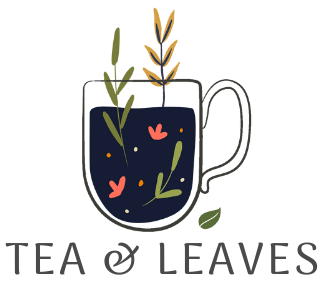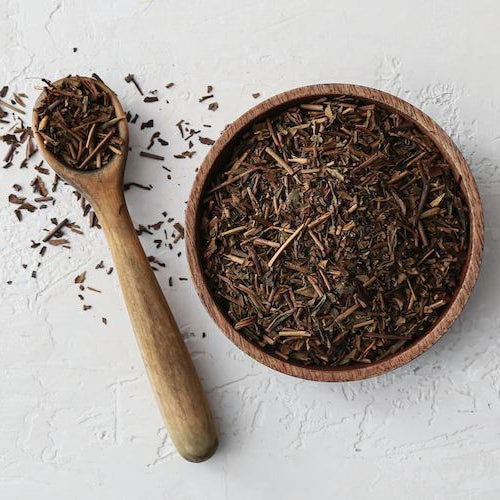Hojicha is a unique type of Japanese green tea that offers a warm, roasted flavour profile unlike any other. While most green teas are steamed to retain their fresh, grassy notes, hojicha is made by roasting green tea leaves over high heat. This roasting transforms the leaves into a reddish-brown colour and imparts a comforting, toasty aroma with hints of caramel, cocoa, and woodsmoke. One key benefit of hojicha is its low caffeine content, making it a soothing drink that’s perfect for evenings or for anyone looking to reduce their caffeine intake.

Hojicha Loose Leaf vs. Hojicha Powder
Hojicha comes in two main forms: loose leaf and powder, each with its own use and appeal.
Loose leaf hojicha is brewed by steeping the roasted leaves in hot water. It yields a smooth, earthy cup with minimal bitterness, and the roasting process mellows out the more astringent qualities found in many other green teas.
Hojicha powder is made by finely grinding the roasted tea leaves into a soft, brown powder. Similar to matcha in preparation, it can be whisked into water or milk, and is commonly used in lattes, baked goods, and even savory dishes. Its concentrated flavour makes it especially versatile in culinary applications.
Hojicha as a Coffee Alternative
Thanks to its rich, roasted flavour and low caffeine levels, hojicha has gained popularity as a gentle coffee alternative. While it doesn’t provide the same caffeine kick as espresso or drip coffee, it offers a warm, satisfying drinking experience with a similar depth and complexity - minus the jitters or afternoon crash.
A hojicha latte, for example, delivers cozy, nutty undertones with only a fraction of the caffeine found in coffee (about 7–15 mg per cup, compared to 95 mg in an average cup of coffee). This makes it ideal for:
Afternoon or evening drinks
People sensitive to caffeine
Anyone seeking a more mellow, calming routine
Plus, it pairs beautifully with oat milk, almond milk, or dairy, enhancing its naturally sweet and roasted notes.

Hojicha Powder vs. Matcha: Key Differences
Although hojicha powder and matcha are both finely ground Japanese green teas, their production methods and flavour profiles differ significantly:
| Feature | Hojicha Powder | Matcha |
|---|---|---|
| Colour | Light to deep brown | Vibrant green |
| Flavour | Roasted, nutty, smoky | Grassy, umami, slightly bitter |
| Caffeine | Low | High |
| Use | Lattes, baking, savory uses | Ceremonial tea, lattes, sweets |
| Production | Roasted before grinding | Steamed, then stone-ground |
Hojicha tea is more than just a green tea variant - it's a comforting, adaptable, and flavourful experience. Whether steeped traditionally or whisked into a creamy latte, it provides a roasted richness that's soothing to the senses. And with its lower caffeine content, it’s an excellent alternative for coffee drinkers looking to cut back without sacrificing flavour.

